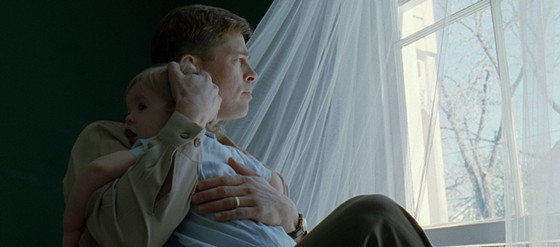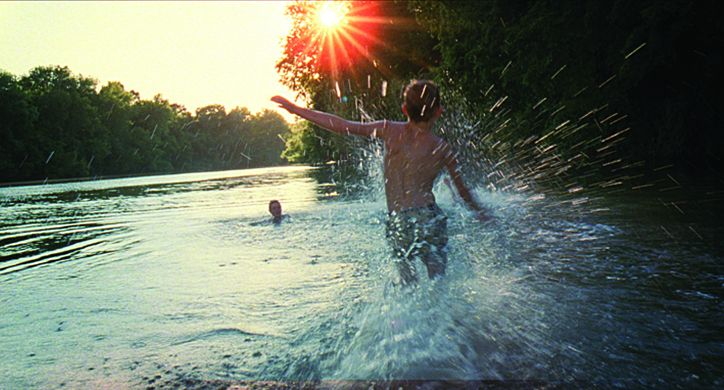5. Natural light prevails

The natural light that is used gives the movie its visual grandeur, and the sun rays that illuminate nature make it seem godlike. The rare scenes in which the artificial light is used are those of sentimental and joyous moments. In one frame, a street lamp is shown and darkness surrounds it, in contrast to the tender moments and divine shots of nature. The natural light gives the movie a note of transparency; everything is presented just the way it is, without facades.
Throughout the part of the movie dealing with the O’Briens, it is almost always daytime and the sun that illuminates the characters suggests the religious background of the film. The O’Briens are God’s children as well as the criminals who are shown while being taken by the police.
Everything around them is bathed in sunlight that gives the reality its magnificence, and the camera movement along with frequent cuts make the presented visuals hard to forget. In the scenes with the adult Jake, natural light emphasizes the main ideas of the narration and gives grandeur to the cold and towering buildings.
6. Music complements visual imagery

Music in the film is as abundant as its visual imagery. They complement each other and enhance their impact on the viewer. Part of the music was composed by Zbigniew Preisner, a composer well known for his collaboration with Krzysztof Kieslowski. His “Lacrimosa” plays during the scenes with cosmic imagery and a meteor hitting the Earth.
The piece is haunting; it gives the presented images a sublime and divine aura. Sometimes there is just silence, or the sounds naturally produced by the waterfalls or the space ambient. Then the viewer can focus on the images and their poetic beauty.
Gustav Mahler’s symphony “Titan” can be heard as well, a classical piece that perfectly fits in with the scenes it accompanies. Various classical composers’ works are played in the film; they all add up to the film’s richness, serenity, sadness, or emotional perplexity. Mr. O’Brien plays the organ and the piano; it further enriches the movie in the musical sense, but also adds a new layer of complexity to his character.
As we learn toward the end of the movie, there is a gentle side to him, the artistic one. In the final scene, Berlioz’s requiem “Agnus Dei” is playing, portraying the eternity.
7. The final scene is sublime

The scene begins with the following words: “Guide us. Till the end of time.” Its composition shows that temporal and spatial relationships are in a flux, and the physical and natural laws are practically nonexistent. The beauty of this scene simply cannot be put into words. It is ethereal and it is perhaps the most expressive and vivid portrayal of eternity in the history of cinema.
The mask is shown going down into the sea. The symbolism is obvious; in eternity, everything is the way it truly is. The masks have fallen, and the essence of man comes into being. It is portrayed by means of ordinary life objects and surroundings that are either derived from cultural roots or the pure imagination of the director.
What is lost is found, the loneliness of the desert is no more. This scene is not only a work of art that tries to portray eternity; it aims to bring peace to the viewer, if only for a moment. After Mrs. O’Brien and her son are united, she deliberately gives him away to God. She is at peace with herself and the whole universe.
Author Bio: Hrvoje Galich is a student of political science and writes expressionist poetry. He believes that Tristan und Isolde is the most beautiful artistic piece in the history of man. He loves movies by Andrei Tarkovsky, Michelangelo Antonioni, Ingmar Bergman and Shohei Imamura. He adores his cat “Meow”, the only cat in the world that can say her name.